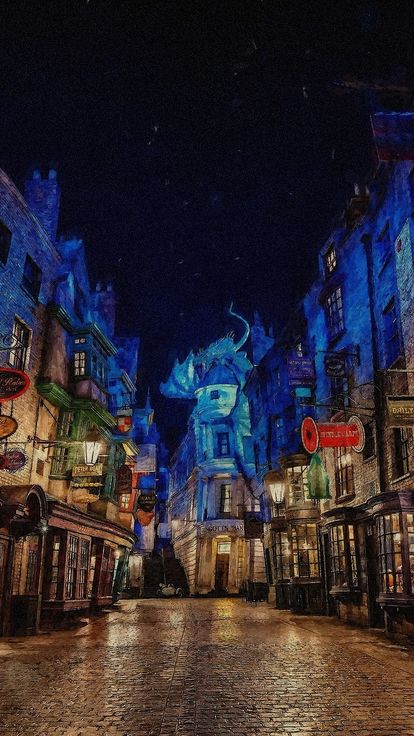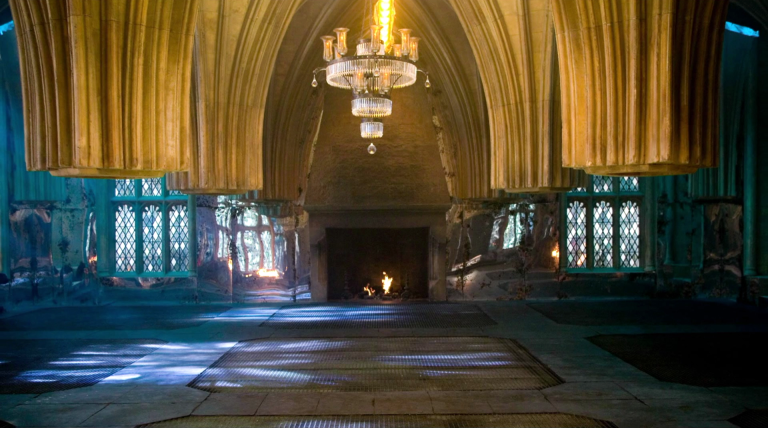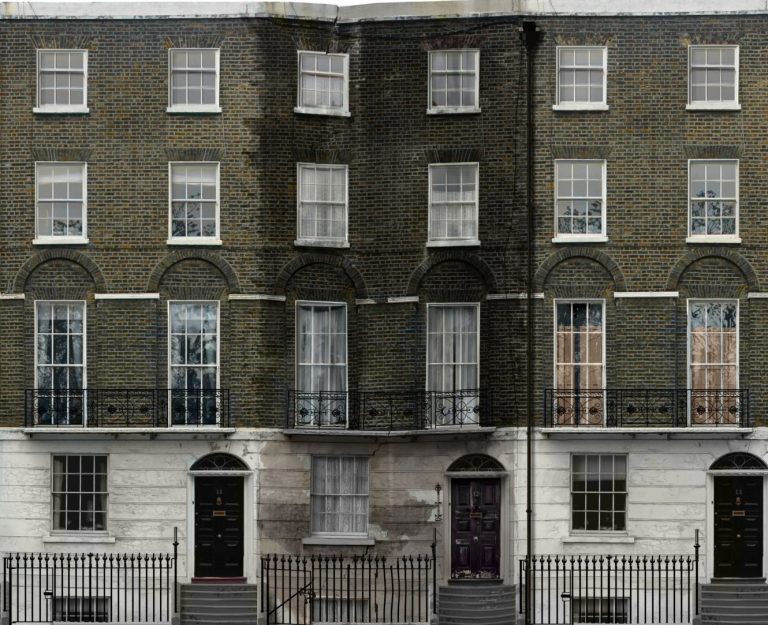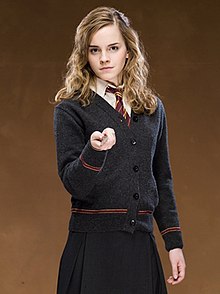How Were The Magical Locations Like Diagon Alley And Hogwarts Brought To Life In The Harry Potter Movies?
Step into the enchanting world of Harry Potter, where magic and wonder come to life on the silver screen. One of the most captivating aspects of the Harry Potter movies is the incredible depiction of the magical locations, such as Diagon Alley and Hogwarts. But have you ever wondered how these fantastical places were brought to life? In this article, we will delve into the behind-the-scenes magic and explore the creative techniques used to transport viewers into the spellbinding world of Harry Potter.
When it comes to creating the magical locations in the Harry Potter movies, the filmmakers spared no expense in their attention to detail. From the bustling streets of Diagon Alley to the grand halls of Hogwarts, every aspect was meticulously designed to immerse the audience in a world of wonder. In order to achieve this, a combination of practical sets, intricate set designs, and visual effects were employed. The result? A visual feast for the eyes that leaves viewers spellbound.
Now, let’s embark on a journey behind the scenes and uncover the secrets of how Diagon Alley and Hogwarts were brought to life in the Harry Potter movies. Get ready to be amazed as we unveil the magic that goes into creating these iconic locations. Are you ready to step into the wizarding world? Let’s go!

Bringing the Magical Locations of Harry Potter to Life
In the Harry Potter movies, the magical locations of Diagon Alley and Hogwarts were brought to life in a truly enchanting way. These iconic settings played a crucial role in the story, and their creation required a combination of storytelling, set design, visual effects, and attention to detail. In this article, we will explore how these magical locations were transformed from words on a page to immersive and captivating film sets.
The Creation of Diagon Alley
Diagon Alley, the bustling wizarding shopping district, is a central location in the Harry Potter series. Its vivid depiction in the movies captured the imagination of fans worldwide. To bring Diagon Alley to life, the filmmakers utilized a combination of practical sets and visual effects.
The physical set for Diagon Alley was built at Leavesden Studios in England. The set designers meticulously crafted every detail, from the colorful storefronts to the towering buildings. Walking through the set, the actors and the audience alike were transported into the magical world of Harry Potter. The attention to detail was astounding, with shop signs, displays, and even the cobblestone streets meticulously designed to reflect J.K. Rowling’s vision.
The Magic of Set Design
The set designers faced the challenge of creating a space that felt both fantastical and grounded in reality. They drew inspiration from various sources, including Victorian London and medieval architecture. This blend of historical elements with whimsical touches resulted in a visually stunning and believable Diagon Alley.
One of the most iconic features of Diagon Alley is the Leaky Cauldron, the entrance to the wizarding world. The set designers meticulously crafted this pivotal location, ensuring that it felt like a hidden gem within the bustling shopping district. The attention to detail extended to every shop and building in Diagon Alley, creating an immersive environment where magic felt tangible.
Transforming Hogwarts into a Magical School
Hogwarts School of Witchcraft and Wizardry is the heart of the Harry Potter series. The filmmakers faced the monumental task of bringing this iconic school to life and creating a sense of wonder and grandeur.
For the exterior shots of Hogwarts, the filmmakers utilized a combination of practical sets and stunning visual effects. The physical set for Hogwarts was built on the grounds of Alnwick Castle in England, providing a picturesque backdrop that perfectly captured the essence of the school. This real-life location brought a sense of authenticity and groundedness to Hogwarts.
The Grandeur of Hogwarts
The set designers meticulously crafted the interiors of Hogwarts, ensuring that each room and corridor reflected the rich history and magic of the school. From the Great Hall to the Gryffindor common room, every location within Hogwarts was designed with intricate detail and care. The set designers drew inspiration from various architectural styles, creating a sense of timelessness and grandeur.
Visual effects played a crucial role in enhancing the magic of Hogwarts. From the moving staircases to the enchanted ceiling of the Great Hall, visual effects seamlessly integrated with the practical sets, creating a truly immersive experience. The combination of practical sets and visual effects brought Hogwarts to life in a way that delighted fans and allowed them to step into the world of Harry Potter.
The Collaborative Effort
Bringing the magical locations of Diagon Alley and Hogwarts to life was a collaborative effort involving various departments. The set designers, visual effects artists, costume designers, and many others worked together to create cohesive and visually stunning environments that transported audiences into the wizarding world.
The attention to detail and dedication to capturing the essence of J.K. Rowling’s vision is what made the magical locations of Diagon Alley and Hogwarts truly come alive on the big screen. The combination of practical sets, visual effects, and meticulous craftsmanship ensured that these locations became as iconic as the characters themselves.
The Legacy of the Magical Locations
The magical locations of Diagon Alley and Hogwarts continue to captivate audiences long after the release of the Harry Potter movies. They have become beloved landmarks in the hearts of fans, inspiring a sense of wonder and enchantment. The attention to detail and the immersive environments created for these locations have set a new standard for world-building in fantasy films.
As fans revisit the Harry Potter movies, they are transported back to the magical world of Diagon Alley and Hogwarts, where anything is possible. The legacy of these locations serves as a testament to the power of storytelling and the artistry involved in bringing fictional worlds to life.
Key Takeaways: How were the magical locations like Diagon Alley and Hogwarts brought to life in the Harry Potter movies?
- The magical locations in the Harry Potter movies were brought to life through a combination of practical sets and visual effects.
- Diagon Alley was created as a physical set, with meticulous attention to detail to capture the magical atmosphere described in the books.
- Hogwarts was a mix of real locations, such as Alnwick Castle, and elaborate sets built at Leavesden Studios.
- Special effects were used to enhance the magical elements of the locations, like floating candles in the Great Hall and moving staircases in Hogwarts.
- The production team worked closely with J.K. Rowling to ensure the locations stayed true to her vision and the world she created.
Frequently Asked Questions
How were the magical locations like Diagon Alley and Hogwarts brought to life in the Harry Potter movies?
Creating the magical locations of Diagon Alley and Hogwarts in the Harry Potter movies was a feat of imagination and creativity. The filmmakers used a combination of practical sets, visual effects, and intricate set designs to bring these locations to life.
For Diagon Alley, the production team built a sprawling set at Leavesden Studios, complete with shops, cobblestone streets, and magical details. The set was designed to be immersive and authentic, with each shop having its own unique look and feel. Visual effects were also used to enhance the magical elements, such as the floating candles and moving portraits.
Hogwarts, on the other hand, was a combination of practical sets and digital effects. The iconic Hogwarts castle was created using a combination of miniatures, scale models, and computer-generated imagery. The Great Hall, classrooms, and other interior locations were built as practical sets, allowing the actors to interact with their surroundings. Visual effects were then used to enhance the magical elements, such as the moving staircases and floating candles.
What were some of the challenges in bringing Diagon Alley and Hogwarts to life?
Bringing Diagon Alley and Hogwarts to life in the Harry Potter movies presented several challenges for the filmmakers. One of the main challenges was making the magical locations feel authentic and believable. The production team had to pay attention to every detail, from the design of the buildings to the placement of magical objects, to create a world that felt real.
Another challenge was the sheer scale of the locations. Both Diagon Alley and Hogwarts are expansive places with many intricate details. The production team had to carefully plan and execute the set designs to ensure that every corner of these locations felt fully realized.
Additionally, integrating practical sets with visual effects was another challenge. The filmmakers wanted to create a seamless blend of real and digital elements, where the actors could interact with their surroundings. This required careful coordination between the production team, visual effects artists, and the actors themselves.
What was the inspiration behind the design of Diagon Alley and Hogwarts?
The design of Diagon Alley and Hogwarts in the Harry Potter movies was heavily influenced by J.K. Rowling’s descriptions in the books. The production team worked closely with Rowling to ensure that the locations captured the essence of her vision.
For Diagon Alley, Rowling described it as a bustling street filled with quirky shops and magical objects. The production team took inspiration from London’s Leadenhall Market and combined it with their own imaginative flourishes to create the unique look of Diagon Alley.
Hogwarts, on the other hand, was inspired by various real-life castles and schools. The production team visited several castles in Scotland and England to get a sense of the architecture and atmosphere. They also drew inspiration from traditional British boarding schools to create the iconic look of Hogwarts.
Were any real locations used for Diagon Alley and Hogwarts?
While Diagon Alley and Hogwarts were primarily created through set designs and visual effects, some real locations were used as inspiration. As mentioned earlier, London’s Leadenhall Market served as a reference for the design of Diagon Alley. The market’s historic architecture and vibrant atmosphere influenced the look and feel of the magical shopping street.
For Hogwarts, the production team visited several castles in Scotland and England to gather inspiration. Alnwick Castle in Northumberland, England, served as the exterior location for Hogwarts in the first two films. The castle’s grandeur and medieval architecture were a perfect fit for the iconic school of witchcraft and wizardry.
How did the use of visual effects enhance the magical elements in Diagon Alley and Hogwarts?
Visual effects played a crucial role in enhancing the magical elements in Diagon Alley and Hogwarts. They allowed the filmmakers to bring to life the fantastical aspects of the Harry Potter world that couldn’t be achieved through practical means alone.
In Diagon Alley, visual effects were used to create the floating candles, moving portraits, and other magical objects. These effects added an extra layer of enchantment to the already immersive set design, making the world feel truly magical.
For Hogwarts, visual effects were used to bring the moving staircases, flying owls, and other magical elements to life. The digital effects seamlessly blended with the practical sets, creating a world where magic was an integral part of everyday life at the school.

Top 10 Places You MUST Visit If You’re a Harry Potter Fan
Final Summary: Bringing the Magic to Life
And there you have it! The magical locations of Diagon Alley and Hogwarts were truly brought to life in the Harry Potter movies through a combination of incredible set design, visual effects, and attention to detail. The talented team behind these films spared no expense in creating a world that transported us into the enchanting realm of witches and wizards. From the bustling streets of Diagon Alley to the majestic halls of Hogwarts, every aspect was meticulously crafted to capture the essence of J.K. Rowling’s beloved books.
In Diagon Alley, the set designers worked their magic to recreate the vibrant and whimsical atmosphere described in the novels. Every shop and storefront was meticulously designed with intricate details, from the colorful signage to the quirky props that adorned the shelves. It truly felt like stepping into a world where magic was real. And when it came to Hogwarts, the filmmakers spared no expense in creating a grand and awe-inspiring castle. With its towering turrets, winding staircases, and breathtaking Great Hall, Hogwarts became a character of its own, immersing us in the world of Harry Potter.
The visual effects team also played a crucial role in bringing these locations to life. From the iconic brick wall entrance to Diagon Alley to the moving staircases of Hogwarts, their expertise in using CGI and other techniques added an extra layer of enchantment. These effects seamlessly blended with the physical sets, creating a seamless and immersive experience for viewers.
In conclusion, the magical locations of Diagon Alley and Hogwarts in the Harry Potter movies were a testament to the creativity, skill, and dedication of the entire production team. Through a combination of set design, visual effects, and attention to detail, they transported us to a world where magic was real. So, whether you’re a die-hard fan or a casual viewer, these films have undoubtedly left an indelible mark on our imaginations, forever enchanting us with the wonder and magic of the wizarding world.






